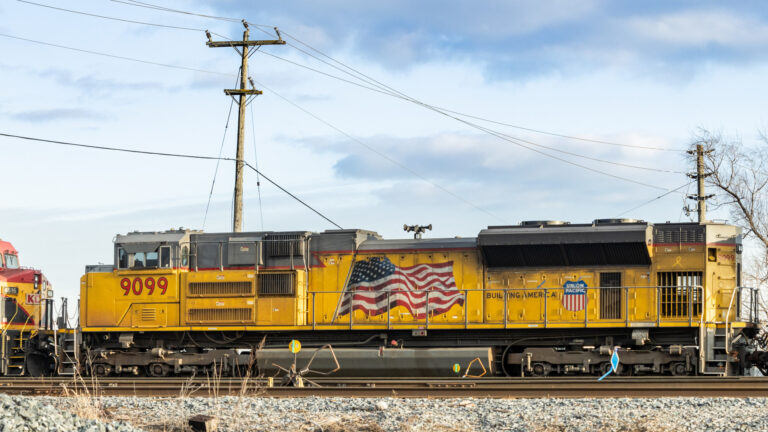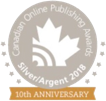Canada needs long-term and venture capital to build infrastructure, innovate and develop its critical minerals to meet the global net-zero energy transition. Pension funds are key to that goal.
While Canada’s debate does circles about the merits of mandating that our pension funds invest more at home, a different conversation is unfolding among our Western allies who focus on the strategic necessity to counter China’s global geopolitical dominance over critical minerals, which are essential for modern technologies ranging from defense technologies to renewable energy.
Their solutions are found in strategies accompanied by the policies and the financial tools needed to attract pension fund investments in these areas.
Their strategies marry great power geopolitics, global energy security and strengthening Western democratic alliances with institutional investors’ attention to high environmental, social and governance (ESG) standards around which these issues converge.
Canada needs to do the same. Why?
Critical technologies ranging from defence weapons to semiconductor chips and the energy systems necessary for the net-zero economy rely on mining and processing critical minerals.
Today, China dominates both, the assets and their supply chains. Decoupling the West’s reliance on China requires an alternative asset class and this necessitates strategic national investments, financial tools and regulations to attract the necessary staggering levels of venture and patient capital investments.
What distinguishes a Western asset class from China’s? High environmental and human-rights standards and democratic institutions – the very principles of ESG.
Critical minerals with a side of Western values
Remember Canada’s talk about leading the global transition to the net-zero economy? Maybe “mines to mobility?” Or the federal government’s critical minerals and Indo-Pacific strategies, or multi-billion-dollar announcements to secure EV battery manufacturing deals?
The unifying justification was Canada’s geopolitical pivot away from China toward strengthening allied trade and defence co-operation. Canada’s message to the world: we have the minerals you want and the values you promote.
Despite those strategies and ad-hoc funding announcements, China continues to buy equity and ownership in our Northern critical minerals projects and accompanying infrastructure.
The risks have grown such that CSIS sent a team to warn Northerners about the real national security risks of investing with nefarious actors. Yet the reality remains that Indigenous and Northern leaders need capital investment to become equity owners of desperately needed critical infrastructure including the critical minerals economy.
When ESG investing hurts the people of the North American Arctic
Making Greenland a full part of North America should be a priority for Canada
More broadly, Canada’s North has an abundance of critical minerals; a deficit of infrastructure and friendly capital; Indigenous corporations seeking investment partners; and an underdefended and underdeveloped coastline set in a geopolitical arena divided between NATO countries and a well-developed (yet Chinese-mortgaged) Russian Arctic.
Canada’s North is precisely where our national security meets ESG. Our allies understand this, but we have yet to connect the dots between our pension-fund debate, the need to address the geopolitical realities of our time and the potential that the North holds for Canada.
Europe and ESG
In April, the European Union (EU) passed the Critical Raw Materials Act to secure a sustainable supply of raw materials, create strategic reserves to safeguard its energy transition and develop its digital industries and defence sectors.
The act complements the existing European Investment Bank strategic roadmap, which highlights investments in critical-minerals supply chains, and strategic civilian, defence and space-sector technology projects while safeguarding its financing capacity and ensuring the highest ESG standards.
The InvestEU Fund supports those initiatives through financial mechanisms aimed at attracting pension funds and other capital for innovation projects with high environmental and social standards and higher-risk financial ventures needed to build sustainable critical raw-material value chains within the EU.
Those strategic aims include a focus on the Arctic. In March, EU President Ursula von der Leyen announced the opening of the new EU diplomatic office in Greenland’s capital, Nuuk, accompanied by $137 million worth of investments to support Greenland’s efforts to be a strategic EU supplier of raw materials and to give the EU a “concrete presence” in the Arctic.
The U.S. federal ESG discussion
In 2022, the U.S. unveiled its Center for Critical Minerals Strategy. The center houses the U.S. national minerals security partnership, which supports critical mining projects and supply chains in countries with high ESG potential. To obtain the necessary patient capital, the partnership works with MINVEST, which has a mandate to attract pension-fund investments for mining projects.
The interagency collaboration between MINVEST, the center, the State Department and the Bureau of Energy Resources links U.S. national climate, energy and security issues with U.S. leadership aims in the global energy space.
Jose W. Fernandez, U.S. under-secretary for economic growth, energy and the environment, spoke at a March conference in Canada about diversification and Greenland’s high ESG standards for attracting pension funds’ 20-year patient capital.
Greenland’s critical-minerals investors already include the Canadian Pension Plan Investment Board. The U.S. already opened its full-time consulate in Nuuk in 2020 and Fernandez specifically noted Greenland’s historical role in supplying the raw materials that built U.S. defence capabilities during the Second World War.
Shortly thereafter, Canada’s Fortune Minerals received its own Pentagon investment of US$6.5 million for its cobalt operation in the Northwest Territories. Part of the broader U.S. minerals security partnership, it was not a loan. Yet, eventually everything has its price. *
The national imperative of a new perspective
Bo Lidegaard, a former Danish ambassador and permanent under-secretary of state, argues not only for a new asset class to compete with Chinese investments but also a high-class critical minerals market with Organization for Economic Co-operation and Development (OECD)-defined and -regulated ESG standards along the full supply chain.
Without such co-ordination, Lidegaard argues, individual efforts of the EU, the U.S. and others will not be enough to compete with China. The co-ordinated policy must also include de-risking tools and strategically identified full supply chains to enable the bundling of individual supply-chain segments that pension funds seek.
According to Lidegaard, standalone junior mining projects, which comprise a large percentage of the raw-minerals market, will not attract the necessary long-term capital. While Lidegaard’s ambitions may seem big, perhaps a higher-priced ESG asset class is the small price to pay for national security and safeguarding Western democracy.
Where Canada’s national defence meets ESG
By looking North, Canada’s pension fund debate may find perspective and an answer. We need to focus on why, to what end and how our North is both Canada’s greatest investment opportunity and, if left underdeveloped, our greatest geopolitical insecurity.
Turning this national imperative into a strategic plan, however, requires seeing the whole ocean through the icebergs.
Sure, we can hope that Canadian values are enough to attract pension-fund investments or hope the U.S. will sell us the necessary semiconductor chips, EV batteries, renewable energy and defence technologies, fibre cables and smart infrastructure built from our critical minerals with Pentagon money.
Or we can recognize that the North is where ESG meets Canadian national defence.
For Canada to defend its North and strengthen its national security and prosperity, we need an Arctic strategy connected to a national strategy and roadmap for navigating today’s global geopolitical realities, grounded in Canadian values and equipped with the necessary financial tools.
It is also the perspective needed to exit our pension-fund roundabout and instead enable the patient capital investment to help develop our critical minerals, innovate and build the infrastructure, supply chains, and defence technologies Canada requires to meet the moment.
* Editor’s note: A previous version of this article dropped the word ‘not’ and incorrectly identified this funding as a loan.










